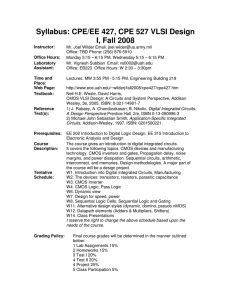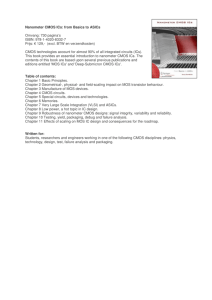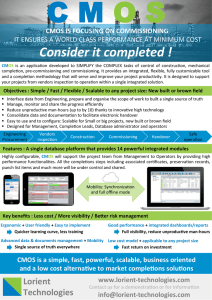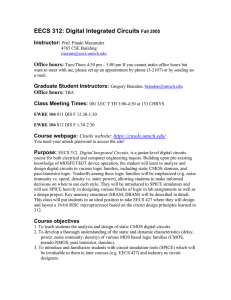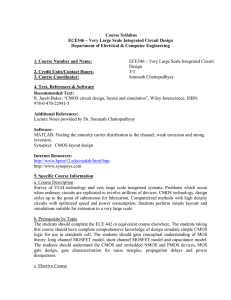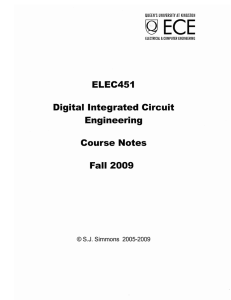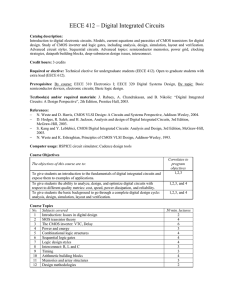ECE 442 (.doc)
advertisement
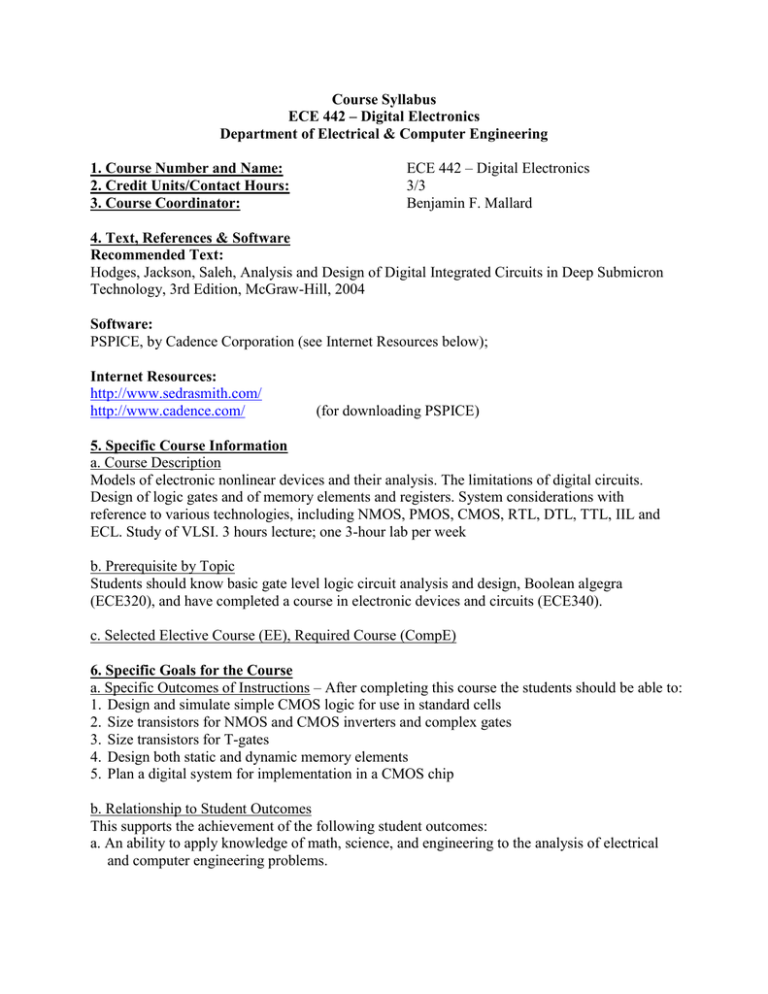
Course Syllabus ECE 442 – Digital Electronics Department of Electrical & Computer Engineering 1. Course Number and Name: 2. Credit Units/Contact Hours: 3. Course Coordinator: ECE 442 – Digital Electronics 3/3 Benjamin F. Mallard 4. Text, References & Software Recommended Text: Hodges, Jackson, Saleh, Analysis and Design of Digital Integrated Circuits in Deep Submicron Technology, 3rd Edition, McGraw-Hill, 2004 Software: PSPICE, by Cadence Corporation (see Internet Resources below); Internet Resources: http://www.sedrasmith.com/ http://www.cadence.com/ (for downloading PSPICE) 5. Specific Course Information a. Course Description Models of electronic nonlinear devices and their analysis. The limitations of digital circuits. Design of logic gates and of memory elements and registers. System considerations with reference to various technologies, including NMOS, PMOS, CMOS, RTL, DTL, TTL, IIL and ECL. Study of VLSI. 3 hours lecture; one 3-hour lab per week b. Prerequisite by Topic Students should know basic gate level logic circuit analysis and design, Boolean algegra (ECE320), and have completed a course in electronic devices and circuits (ECE340). c. Selected Elective Course (EE), Required Course (CompE) 6. Specific Goals for the Course a. Specific Outcomes of Instructions – After completing this course the students should be able to: 1. Design and simulate simple CMOS logic for use in standard cells 2. Size transistors for NMOS and CMOS inverters and complex gates 3. Size transistors for T-gates 4. Design both static and dynamic memory elements 5. Plan a digital system for implementation in a CMOS chip b. Relationship to Student Outcomes This supports the achievement of the following student outcomes: a. An ability to apply knowledge of math, science, and engineering to the analysis of electrical and computer engineering problems. c. An ability to design systems which include hardware and/or software components within realistic constraints such as cost, manufacturability, safety and environmental concerns. e. An ability to identify, formulate, and solve electrical and computer engineering problems. i. A recognition of the need for and an ability to engage in life-long learning. k. An ability to use modern engineering techniques for analysis and design. n. Knowledge of math including differential equations, linear algebra, complex variables and discrete math. 7. Topics Covered/Course Outline 1. Noise Margins 2. Propagation Delays 3. Power Dissipation 4. Long and Short Channel MOSFET Models 5. Capacitance MOSFET Model 6. Layout Basics and Modeling Parameters 7. CMOS Sizing 8. Memory Design 9. Logic Gate Design Prepared by: Benjamin F. Mallard, Professor of Electrical and Computer Engineering, November 2011 Ali Amini, Professor of Electrical and Computer Engineering, March 2013
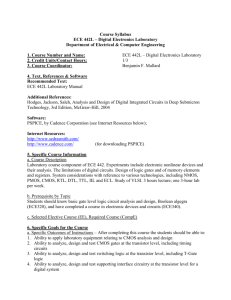
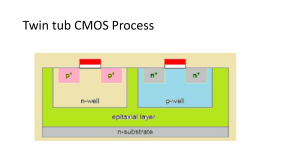


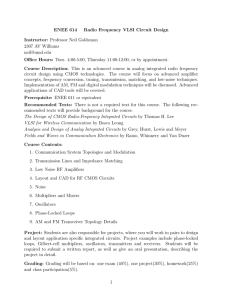
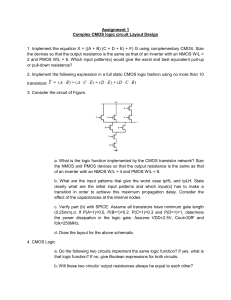



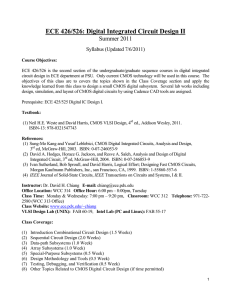
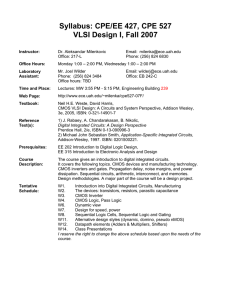
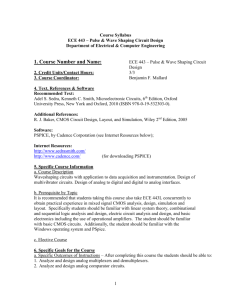
![EEE 425 Digital Systems and Circuits (4) [F, S]](http://s2.studylib.net/store/data/018534010_1-3aefcb1fde856bb52852ce735ed7fd4e-300x300.png)
